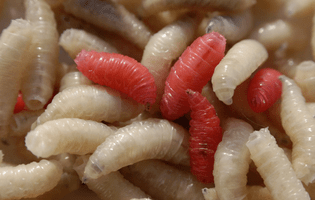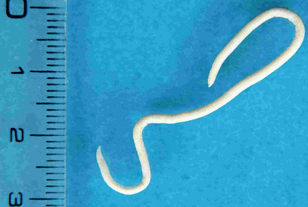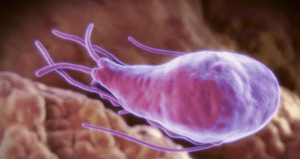It is difficult for an ordinary person to even imagine how many parasites can endanger his health. These "settlers" can live for years in the human body, literally sucking life out of it and poisoning it with their venom.
Types of parasites

From a medical point of view, parasites include unicellular and protozoan. Depending on their habitat, they are divided into exoparasites (lice, bugs, etc. ) and endoparasites.
Endoparasites have their subspecies:
- Insect larvae.
- Protozoa (amoeba, lamblia).
- Helminths (worms or worms).
Pathways of infection
Each parasite has its own path of penetration into the human body. The most common way is alimentary, ie with the help of water or food. Many insects can carry parasite larvae, polluting the environment. By consuming raw water, unwashed and incompletely prepared foods, a person becomes infected with parasites.
Some species are transmitted directly through human-to-human contact - this time called household contact. For infection it is not necessary to have direct contact with the distributor, it is enough to use household items. In this way, enterobiosis and some other parasitic forms are transmitted.
An equally popular vector-borne route of infection. In this case, the parasites are carried by blood-sucking insects. In this way, they can be obtained after being bitten by a mosquito or other insect.
The last method for obtaining parasites is the percutaneous path, the second name is active. Infection occurs through the penetration of larvae through the mucous membranes and skin. This is due to contact with contaminated soil or water in a body of water.
Symptoms
Parasites in the human body can live for a long time and not manifest themselves. The symptoms, of course, will be, but they are disguised as other diseases. That is why a person may not know for a long time that he is infected.

Symptoms most often appear depending on the location of the larvae, but the body can signal infection and other manifestations. The most common are:
- Flatulence,and constant, indicates the presence of worms in the small intestine;
- Diarrhea.Caused by the absorption of sodium chloride by parasites;
- Constipation.Knitting worms can clog some organs;
- Joint and muscle pain.These pains are caused by the migration of larvae through the human body, to which the immune system responds in this way;
- Allergy.The parasites themselves are an allergen for the body, and damage to the walls of the stomach contributes to indigestion and the entry of food molecules into the blood;
- The appearance of granulomas.This is a type of neoplasm that results from the envelopment of cells from the body of destroyed parasite eggs;
- Dermatological manifestations;
- Anemia.Often people suffer from anemia precisely because of the activity of parasitic forms;
- Sharp fluctuations in weight;
- Mental disorders.In the process of life, parasites release toxins that adversely affect the host's nervous system. The consequence of poisoning the body can be neurosis, depression, anxiety;
- Bruxism.This is grinding teeth during sleep. This is the reaction of the nervous system to the appearance of foreign bodies. But this fact has not been conclusively proven by science;
- Sleep disturbance.This usually results from uncomfortable sensations. An example would be the sharps of them here, which lay their eggs at night. Leaving the rectum, the blade releases a toxin that causes severe itching;
- Dysbacteriosis;
- Oncological diseases;
- Chronic fatigue.Occurs due to lack of nutrients, which adversely affects the condition of the body;
- Respiratory diseases.A number of parasites can live in the airways, causing disease. Other parasites provoke colds by moving through the respiratory system;
- Immune disorders.The absorption of most vitamins by parasites leads to a weakening of the body's barrier functions and a greater likelihood of infection.
But there are also symptoms characteristic of the presence of parasites in a particular human organ. For example, papillomas, the appearance of bald spots on the head, cracked heels and others. May indicate the life of parasites in the liver. In addition, the presence of certain types of parasitic forms can provoke a certain type of disease in humans.
Disease detection

Unfortunately, some doctors deny their duties and do not send a person for special tests to identify parasites in the body. The most common analysis is the supply of feces for worm eggs. The fact is that parasites can inhabit different organs.
There are cases when worms are found in the human brain and eyes. Is it very likely that their eggs will fall from the brain into the feces? Probably not. Even if there are worms in the gut, the eggs of the parasites may not be found.
First, the doctor must perform a visual examination of the patient. Externally, the presence of human parasites can be suspected. The easiest way to find them is to take a blood test aimed at detecting special antibodies against worms.
Description of human parasites
There are several dozen species of parasites that inhabit the human body.
Worms or helminths are a type of worm.Their size depends on the species, for example, female roundworms reach 40 centimeters. Some species can exceed 10 meters in length. The favorite habitat of worms are the intestines, but they are often found in other organs, even in the brain.
For example, the larvae of roundworms circulate through the body, collecting nutrients and returning to the gut, where they grow and multiply. They often live in the respiratory system. The presence of roundworm in the human body is accompanied by dysfunction of internal organs, intoxication of the body, allergic reactions and even fever.
Among the tapeworms is the swine tapeworm, which migrates to the brain through the blood. This parasite enters the body through poorly processed meat products. This worm lives up to 20 years.
This parasite enters the body through poorly processed meat products. This worm lives up to 20 years.
Pinworms most often develop in children, but they are quite common in adults. These worms are small in size, reaching 1 centimeter in length. The spread of eggs from pinworms is carried out in a contact-household way. The female emerges from the rectum and lays eggs in the outer folds of the anus. The toxin released by the female causes severe itching, which causes the eggs to fall on human hands and carry them to all surrounding objects.
The second name of enterobiosis is the disease of dirty hands. All people who come in contact with the carrier are probably infected. Therefore, when pinworms are found, it is recommended to treat the whole family.
Toxocarais a type of parasite that lives in dogs. They enter the human body and also develop well in it. Unlike these worms in the dog's body, human toxocara do not come out, but affect many organs and cause certain diseases. You can get toxocariasis through the soil, as the larvae of these worms come out with the dog's feces. But the parasite's eggs can also be spread by the dog's wet breath.
Alveococci and echinococciinfect the body in many ways. Their danger lies in the fact that the larvae transform into cysts that can be found in various internal organs.
Giardia is the simplest.Like pinworms, Giardia most commonly infects children. They not only reduce the child's immunity, but also provoke a delay in the mental and physical development of children.
They not only reduce the child's immunity, but also provoke a delay in the mental and physical development of children.
This list is far from complete. The main danger from parasites is that no one is immune to infection. Their secrecy leads to the fact that a person for years feeds on parasites without knowing it. Observance of personal hygiene, constant wet cleaning of the home and observance of the norms for heat treatment of meat products are not bad prevention of the infection. It will be helpful to have a medical check-up and undergo the necessary tests every six months to prevent the spread of parasites.
















































